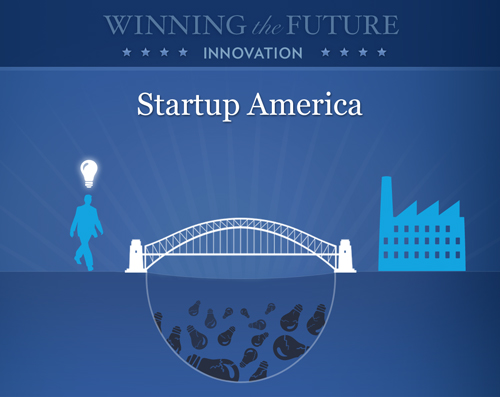
Today, the White House released “A Strategy for American Innovation: Securing Our Economic Growth and Prosperity.” The Strategy is a commonsense, sustained approach to helping America win the future by out-innovating our global competitors.
You can read the whole document over on WhiteHouse.gov/Innovation and submit your comments and questions on the Strategy via Slideshare.
Here are a few things you should know about the Strategy for American Innovation:
Helping Startups Overcome the “Valley of Death”

This week, the White House launched Startup America, a new initiative to help entrepreneurs overcome what’s often called the “valley of death” on the way to success by helping with access to capital, streamlining regulations, mentors for experienced advice, and tax breaks to help them get over the hump. Check out CEA Chairman Austan Goolsbee’s latest White House White Board Video to learn more.
Investing in Clean Energy Initiatives

In his State of the Union Address, the President laid out his vision for winning the future by investing in innovative clean energy technologies. To accelerate the development of these technologies the President is proposed a Clean Energy Standard that will help us reach a goal of delivering 80% of the nation’s electricity from clean sources by 2035 and proposed expanded funding for Energy Innovation Hubs.
Investing in Science, Technology, Engineering and Math Education

President Obama is committed to ensuring that the students of today are ready for the high-tech jobs of the future. To do that, we must move from ninth place to first place in college degrees. The Strategy for American Innovation lays out key steps we will take to out-educate our global competitors from training 100,000 new STEM teachers to investing in game-changing educational technology.
Investing in Research and Development

Government support for basic research and development is essential for laying the groundwork for new innovation and the industries of the future. The President’s FY 2012 budget continues the commitment to double funding for three key science agencies – the National Science Foundation, the Department of Energy’s Office of Science, and the National Institute of Standards and Technology.
Reducing Patent Delays by 15 Months by 2015

Today, it takes nearly 35 months on average for an idea or product to make it through the patent process, slowing new and innovative products and ideas from making it to the marketplace. By improving and streamlining the patent process, we’ll reduce the delay to 20 months by 2015, and just 12 months for priority applications, while improving the quality of patents.


